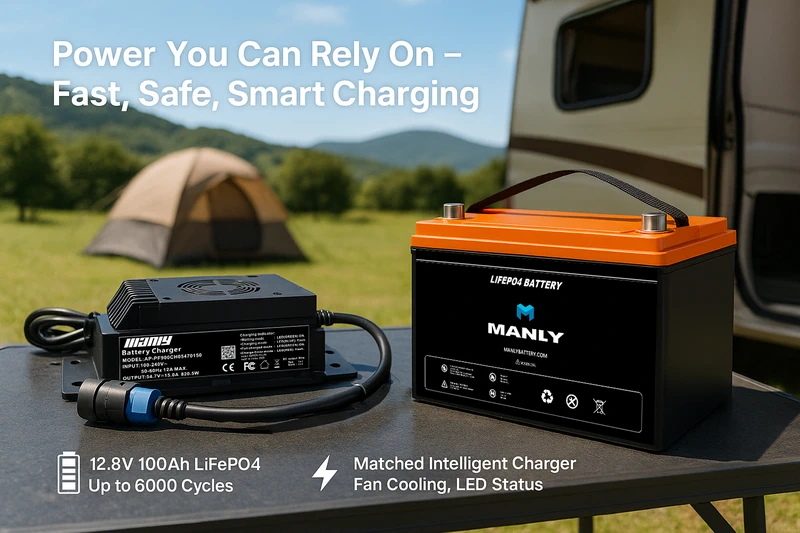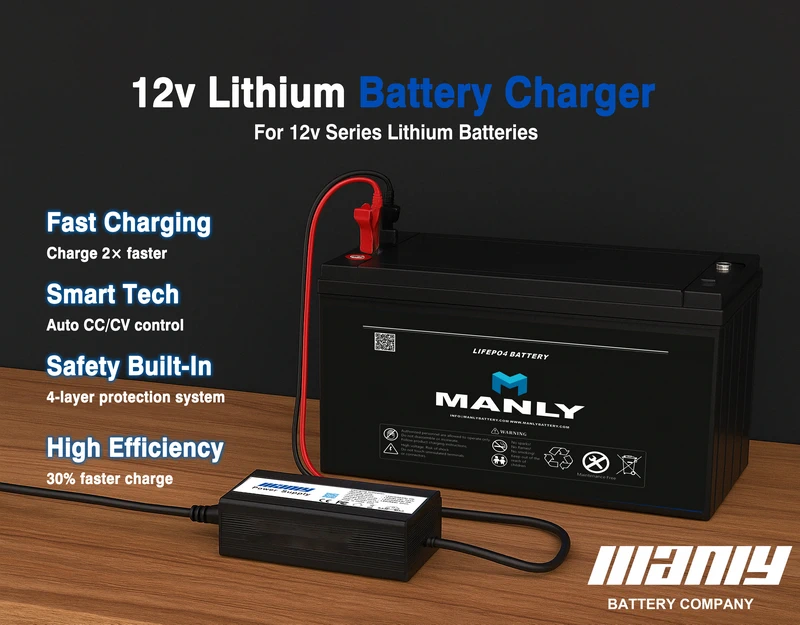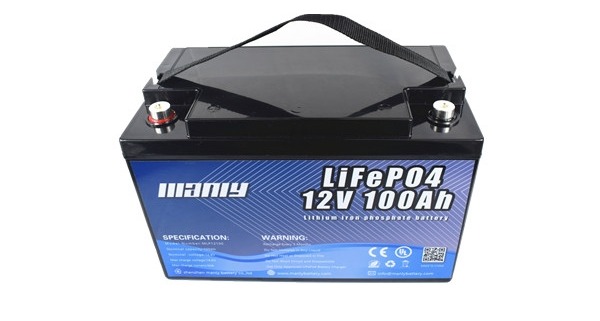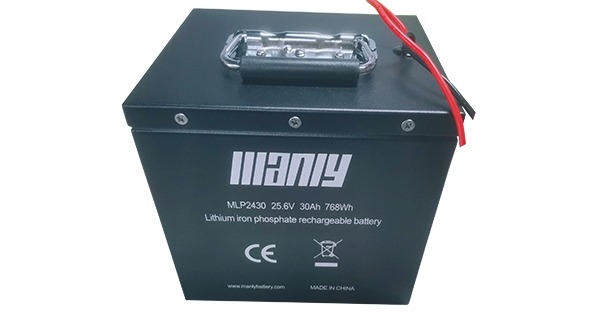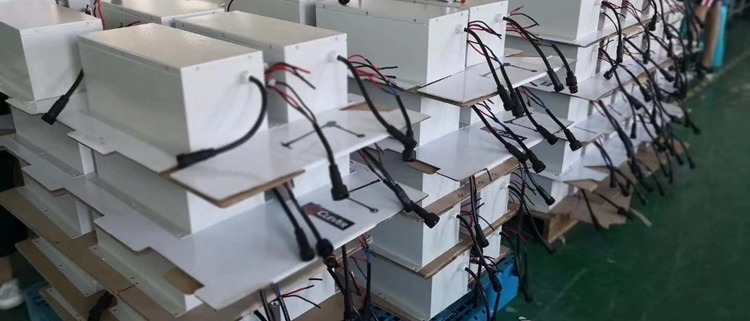How Long To Charge a 12v Battery At 10 Amps
Table of Contents
- How Long To Charge a 12v Battery At 10 Amps
- Factors Affecting Charging Time
- Calculation of Charging Time
- The Steps To Charge a 12V Battery
- Practical Considerations
- Can You Speed Up Charging?
- Troubleshooting Common Battery Charging Issues
- Safety and Maintenance
- Conclusion
- FAQ
- Learn More About Battery
- How to choose an electric sightseeing car
- Intelligent cleaning robot market status
- 12V 30Ah LiFePo4 Solar Street Light Battery
Charging a 12V battery with a 10 amp battery charger might sound simple, but many factors can affect how long it actually takes. From battery size and health to temperature and charger efficiency, each detail plays a role in determining your total charge time. Whether you’re using a smart model from a china battery charger factory or a basic unit from your local store, understanding these variables can help you charge faster, safer, and smarter. This guide breaks down the math, best practices, and common issues so you can get the most out of your battery chargers every time.
Factors Affecting Charging Time
1. Battery Capacity (Ah)
Battery capacity, measured in amp-hours (Ah), represents how much electric charge a battery can hold. Simply put, the larger the capacity, the longer it takes to charge. For example, if you’re using a 10 amp battery charger to charge a 100Ah battery, it would take roughly 10 hours to reach a full charge. The basic formula is:
Charging Time (hours) = Battery Capacity (Ah) ÷ Charging Current (A)
So, if you’re charging a 20Ah battery at 10 amps, expect it to take about 2 hours. A 50Ah battery would need approximately 5 hours under the same conditions. This relationship remains consistent across various battery sizes, assuming the charger maintains a steady current throughout the process.
2. Charging Current (Amps)
The charging current is the amount of electrical current delivered to the battery, measured in amps. Higher currents can reduce charging time, but they also raise the risk of excess heat, which can damage internal components over time. That’s why using a charger with the right current output—like a 10 amp battery charger for mid-sized batteries—is essential. This balances faster charging with the safety and longevity of the battery. Always follow the recommendations provided by the battery charger manufacturer or the battery’s technical datasheet to prevent overheating or short cycling.
3. Efficiency of the Charging Process
Not all the energy you feed into a battery gets stored—some is lost, usually as heat. Charging efficiency refers to the proportion of input energy that the battery can actually retain. For example, if a battery’s charging efficiency is 90%, then 10% of the energy is lost in the process. This means the actual time to charge may be longer than the theoretical value. Lithium-ion batteries, especially those produced by top china smart battery charger suppliers, generally boast higher efficiency levels (up to 95%) compared to traditional lead-acid types, which can drop below 85%. The type of charger also matters—china 12v lithium battery charger models are often optimized for better efficiency and heat management.
4. Importance of Battery Health
Battery health is a major factor in determining how long charging will take. As batteries age or experience repeated deep discharges, their internal resistance increases, slowing down the charging process. Environmental conditions—like extreme heat or freezing cold—can also reduce a battery’s ability to accept and hold a charge. A degraded battery might never fully charge or may take significantly longer than expected. To maintain performance, avoid exposing the battery to harsh temperatures and refrain from letting it discharge completely. Consistent maintenance not only helps preserve capacity but also ensures reliable operation with battery chargers of all types, including those from a china battery charger factory.
Calculation of Charging Time
Example Calculation
To determine how long it takes to fully charge a battery, you can start with a basic formula:
Charging Time (hours) = Battery Capacity (Ah) ÷ Charging Current (A)
Let’s break it down with a practical example. Suppose you’re charging a 100Ah battery using a 10 amp battery charger. The estimated charging time would be:
100Ah ÷ 10A = 10 hours
This calculation assumes perfect charging conditions—specifically, 100% efficiency. But in real-world applications, charging isn’t that flawless. Energy is lost in the form of heat, and actual charging efficiency usually ranges between 80% and 95%, depending on the battery chemistry and the quality of the charger.
To get a more accurate estimate, you should factor in charging efficiency. The revised formula looks like this:
Charging Time = Battery Capacity (Ah) ÷ (Charging Current (A) × Charging Efficiency)
Let’s say the efficiency is 85% (or 0.85 as a decimal). Using the same 100Ah battery and 10 amp battery charger, the calculation becomes:
Charging Time = 100Ah ÷ (10A × 0.85) ≈ 11.76 hours
So, instead of 10 hours, it would actually take nearly 11.8 hours to fully charge the battery under normal efficiency conditions. This adjustment reflects the typical loss that occurs during the conversion of AC power to stored DC energy inside the battery.
These formulas are especially helpful when selecting chargers from a battery charger manufacturer or comparing models from a china battery charger factory. Whether you’re choosing a basic china battery charger or a high-performance china smart battery charger, knowing how efficiency impacts charging time helps ensure you don’t undercharge or overwork your battery.
The Steps To Charge a 12V Battery
Charging a 12V battery correctly isn’t just about plugging in a charger—it’s a step-by-step process that helps you get the most out of your battery while keeping things safe. Whether you’re using basic battery chargers or a high-efficiency china smart battery charger, following the right steps ensures consistent performance and extends battery life.
1. Preparation
Ensure Proper Ventilation
Start by choosing a well-ventilated area. Charging a lead-acid or flooded 12V battery can release hydrogen gas, which is highly flammable. To reduce risk, make sure the area is free of open flames, sparks, or smoking.
Check Compatibility
Before connecting anything, confirm that your charger matches your battery’s voltage and chemistry. For example, a 12v battery manufacturer might require a charger tailored for lithium, AGM, or lead-acid cells. Using an incompatible charger may reduce battery performance or cause permanent damage.
Inspect All Equipment
Look over both the battery and the charger. If you see corrosion on the terminals or cracks in the casing, clean or replace the parts before proceeding. Chargers from reliable sources like a china battery charger factory are designed to reduce risk, but visual inspection is always the first line of safety.
2. Connecting the Charger
Attach the Positive Clamp
Take the red clamp from the charger and securely connect it to the battery’s positive terminal, marked with a “+” sign.
Attach the Negative Clamp
Then, connect the black clamp to the negative terminal, marked with a “–” sign. Always follow this sequence to minimize sparks and protect your gear.
3. Setting Charging Parameters
Adjust to the Right Settings
Set the charger to deliver the correct current. For medium-capacity batteries, a 10 amp battery charger offers a safe and efficient balance between charge time and heat generation.
Select the Proper Charging Mode
Modern china 12v lithium battery charger models often include selectable modes—standard, AGM, lithium, etc. Choose the one that aligns with your battery’s type to prevent overcharging or undercharging.
4. Initiating the Charging Process
Turn on the Charger
Once everything is securely connected and properly set, switch on the charger. If you’re using a smart charger from a trusted battery charger manufacturer, the device will likely auto-regulate voltage and current.
Monitor Charging Progress
Watch the status indicators or digital display if your charger includes one. Many china battery charger models provide real-time voltage or charge percentage, helping you track the process without guesswork.
5. Completing the Charge
Turn Off the Charger First
Before disconnecting anything, power down the charger completely. This step prevents electrical arcing and ensures a safe shutdown.
Disconnect Clamps in Reverse Order
Remove the black (negative) clamp first, then the red (positive) clamp. Reversing the connection sequence reduces the risk of a short circuit.
6. Post-Charging Checks
Verify the Voltage
Use a multimeter to confirm the battery is fully charged. A typical reading should be around 12.6 to 12.8 volts for most 12V lead-acid batteries at rest.
Tidy the Area
Once done, clean up the workspace. Remove tools, wipe down the charger, and store cables properly to keep your setup ready for the next use.
Practical Considerations
Impact of Temperature on Charging Time
Temperature plays a major role in how efficiently and safely a battery charges. Charging performance changes significantly depending on how hot or cold the environment is.
Cold Temperatures Slow Charging
When batteries are exposed to low temperatures—especially below 32°F (0°C)—their internal resistance increases. This makes it harder for ions to move within the cells, slowing down the charging process. For lithium-ion batteries in particular, cold conditions can cause lithium plating, which permanently reduces capacity and raises safety concerns. Studies from Battery University and others confirm that charging lithium-ion cells below freezing should be avoided whenever possible.
Heat Speeds Up Reactions—But Increases Risk
At higher temperatures, electrochemical reactions inside the battery accelerate. This may seem like an advantage for faster charging, but it comes at a cost. Excessive heat raises the chance of thermal runaway—a chain reaction where heat builds up uncontrollably, potentially causing the battery to swell, leak, or even ignite. Using china smart battery charger models with built-in temperature sensors can help manage these risks.
Best Practice: Charge at Room Temperature
For safety and efficiency, it’s best to charge batteries at moderate room temperature—around 77°F (25°C). This range supports stable electrochemical performance while minimizing stress on the battery materials.
Can You Speed Up Charging?
Yes—charging a battery faster is possible, but it comes with trade-offs. You can reduce charging time by increasing current, using fast-charging technology, and managing environmental conditions. However, rushing the process too often can shorten battery life. The key is to find the right balance between speed and longevity.
1. Use a Higher-Current Charger
The easiest way to speed up charging is to increase the current. For example, a 10 amp battery charger can fill a 100Ah battery in roughly 10 hours. By contrast, a 5 amp charger would double that time. The math is simple, but the safety isn’t—charging too fast with an incompatible charger can lead to overheating or battery damage.
Always check the battery’s rated maximum charge current, which is typically listed in the datasheet from your 12v battery manufacturer. Overloading the cells can reduce capacity over time or cause failure. Choosing a charger that matches your battery type and size—such as one from a trusted china battery charger factory—helps protect both speed and safety.
2. Utilize Fast-Charging Technologies
Fast-charging protocols like USB Power Delivery (PD) and Qualcomm Quick Charge (QC) are designed to increase power delivery without sacrificing safety. These systems dynamically adjust voltage and current based on real-time feedback between the charger and the device. For instance, Quick Charge 4.0 can push up to 27 watts, cutting down charge time significantly compared to traditional 5W outputs.
That said, the charger and the device must both support the same fast-charging standard. Using a china smart battery charger or a china 12v lithium battery charger that matches your battery’s chemistry—like LiFePO4 or NMC—is essential. Many advanced battery chargers also include protections for overvoltage, overcurrent, and thermal regulation to ensure charging stays efficient and safe.
3. Optimize Charging Environment
The temperature around your battery has a direct impact on how fast and efficiently it charges. Charging at room temperature—about 77°F (25°C)—allows batteries to perform optimally. When it’s too cold, internal resistance increases, slowing down the charging reaction. When it’s too hot, chemical activity speeds up—but so does battery degradation.
To get the most from your battery chargers, place them in a well-ventilated, shaded space away from heaters, direct sunlight, or cold drafts. Maintaining this temperature range helps chargers—especially high-performance units from a battery charger manufacturer—deliver consistent results without stressing the battery.
4. Consider Battery Health
While fast charging can be convenient, repeated exposure to high currents can cause additional heat buildup inside the cells. This can accelerate wear and reduce the total number of charge cycles a battery can handle. For long-term use, it’s wise to alternate fast charging with slower, controlled cycles.
Many smart chargers today include a battery health mode that limits current after a certain voltage threshold. If you regularly rely on fast charging, look for this feature in models from leading china battery charger suppliers to help extend battery life while still saving time when it counts.
Troubleshooting Common Battery Charging Issues
If your battery isn’t charging as expected, don’t panic. Many charging problems can be traced to common causes—and most can be fixed quickly once you know what to look for. Below, we walk through frequent charging issues and offer practical solutions to keep your battery chargers and batteries performing reliably.
1. Battery Not Charging
Potential Causes and Fixes:
Damaged Charger or Cable
Inspect the power cord and charging unit for signs of fraying, bent prongs, or overheating. Swap in another charger—ideally from a trusted battery charger manufacturer—to rule out hardware failure.Wrong Charger Type
Using the wrong charger can completely prevent charging. For example, a lithium battery requires a dedicated lithium battery charger—not just any generic model. Always verify that your charger matches your battery’s voltage and chemistry.Incorrect Terminal Connections
Check that the red (positive) and black (negative) leads are connected properly. Reversed clamps or loose terminals can disrupt the charging process or cause damage.Battery Management System (BMS) Lockout
Some batteries, especially lithium types, use a BMS that can temporarily shut off charging to protect the cells. If the system won’t reset, contact the 12v battery manufacturer or use a smart diagnostic charger designed for BMS-equipped batteries.
2. Slow Charging
Common Explanations:
Low Charging Current
If your charger supplies insufficient current, expect long charging times. Upgrading to a 10 amp battery charger, when suitable for your battery size, can significantly reduce charge duration.Battery Wear or Age
Older batteries or those that have been deeply discharged multiple times will typically charge more slowly. Run a capacity test if charging seems unusually sluggish.Temperature-Related Slowdown
Both hot and cold temperatures affect charging efficiency. Aim to charge batteries indoors at room temperature (around 77°F or 25°C) for optimal performance. Smart models from a china smart battery charger supplier can help regulate temperature automatically.
3. Charger Overheating
What to Watch For:
Prolonged High Output
Continuous operation at maximum output can cause a charger to overheat. If you’re running your charger for hours without breaks—especially near or above its rated capacity—consider taking cooling intervals or upgrading to a higher-rated unit from a china battery charger factory.Poor Airflow Around the Charger
Keep the charger in a well-ventilated, open space. Avoid covering it with objects or placing it near other heat sources.Exceeding Load Limits
Never exceed the amperage or voltage limits of your charger. Doing so may overwork the internal components and shorten the charger’s service life.
4. Battery Overheating
Primary Causes and Solutions:
Excessive Charging Current
Using a charger that exceeds your battery’s rated input current can cause internal cell temperatures to spike. Stick to the specs listed by your battery manufacturer and avoid using low-quality generic models.Hot Charging Environment
If you’re charging outdoors or in a garage during hot summer months, the ambient heat can compound internal temperature rise. Move your setup to a cooler, shaded, or climate-controlled location.Battery Degradation
Batteries naturally degrade over time. If a unit frequently overheats during charging—even under normal conditions—it may be time to replace it. Look for bulging, discoloration, or voltage drop under load as warning signs.
Safety and Maintenance
Maintaining your battery the right way isn’t just about performance—it’s also about safety. Consistent care and proper charging practices can extend battery life, reduce risks, and ensure your battery chargers operate efficiently without fail.
1. Avoiding Overcharging
Overcharging is one of the most common causes of battery damage. It leads to heat buildup, cell swelling, and a shortened lifespan.
Use Smart Chargers with Auto Shutoff
Smart charging devices—such as a MANLY 12v lithium battery charger—can automatically detect when your battery is full and stop charging to prevent overcharging. This feature protects the battery from stress and reduces the risk of overheating or fire.Set Charging Timers for Manual Chargers
If you’re using a charger without auto shutoff, calculate charging time using this formula:
Charging Time = Battery Capacity (Ah) ÷ Charging Current (A)
For example, a 100Ah battery paired with a 10 amp battery charger would require about 10 hours for a full charge. Be precise—leaving it connected too long can cause long-term damage.Avoid Overnight Charging
Don’t leave batteries on the charger for extended periods. Even with trickle charging, excess heat can build up and slowly degrade the battery over time. Unplug once charging is complete.
2. Monitoring the Charging Process
Monitoring the battery while it charges can help prevent small issues from turning into major failures.
Check for Warning Signs
Look for physical changes such as battery swelling, unusual smells, or heat from the charger. If you notice anything abnormal, stop charging immediately and reach out to the battery charger manufacturer or battery supplier.Charge in a Safe, Open Area
Avoid closed or cluttered spaces. A well-ventilated environment helps disperse heat and prevents potential fire hazards—especially critical when charging high-capacity units.Match the Charger to the Battery
Never mix incompatible gear. For instance, don’t use a lead-acid charger on a lithium-ion battery. Chargers from a reliable china battery charger factory are usually labeled for specific chemistries and voltage levels—follow those specs.
3. Manufacturer Guidelines
Following official manufacturer instructions is more than just good practice—it ensures you get the performance and safety the product was designed for.
Read the Manuals
Always follow the charging instructions provided by your 12v battery manufacturer and the maker of your battery chargers. These documents explain ideal voltage ranges, compatible accessories, and safety precautions.Routine Maintenance
Clean terminals regularly to remove corrosion, which can interfere with electrical contact. Make sure connections are tight and check for physical wear on both battery and charger components. Routine checks can prevent issues before they start.Charge at Proper Temperatures
Avoid charging in extreme heat or cold. For most battery chemistries, room temperature—around 77°F (25°C)—is ideal. Charging outside this range can slow down the process and impact long-term capacity.
Conclusion
Knowing how long to charge a 12V battery at 10 amps isn’t just about plugging in a charger and walking away—it’s about using the right tools, understanding your battery’s specs, and managing environmental conditions. With the right battery charger manufacturer and a well-matched china smart battery charger, you can optimize both charging time and battery lifespan. Whether you’re maintaining backup power systems or just keeping your vehicles ready to go, following the right charging routine ensures safety, efficiency, and long-term reliability.
FAQ
1. Is 10 amps too much to charge a car battery?
No, 10 amps is generally safe for charging most car batteries. It’s a moderate rate that balances speed and battery health, especially for standard lead-acid batteries in passenger vehicles. However, always check the battery label or consult the manufacturer’s guidelines. Some smaller or AGM batteries may recommend lower currents (2–6 amps) to prevent overheating or overcharging.
2. How long to charge a deep cycle battery at 10 amps?
Charging time depends on the battery’s capacity. For example, a 100Ah deep cycle battery will take approximately 10 hours at 10 amps under ideal conditions. But real-world efficiency varies—if the charging system is 85% efficient, the same battery may take closer to 11.8 hours. Always calculate time using this formula:
Charging Time = Battery Capacity (Ah) ÷ (Charging Current × Efficiency)
3. How many amps does it take to charge a 12V battery?
The ideal charging amps depend on the battery size and type. For a small 12V battery (like 20–35Ah), 2 to 5 amps is usually sufficient. For larger batteries (50–100Ah), a 10 amp battery charger is a good choice, offering a faster yet safe charging rate. Always follow the specifications from your 12v battery manufacturer to avoid overloading the battery or damaging its cells.
Learn More About Battery
First, to consider the safety issues
Electric sightseeing car because we all think the operation is easy, so we all casually operate, after all, this car is the steering wheel driving car, there is a steering wheel and speed with the problem, so without professional training also left safety hidden danger. If the electric sightseeing car reaches 4 or more should refer to the manufacturer’s standards to establish a special charging station to ensure charging safety.
Second, to pay attention to energy-saving issues
Through our industry internal measurement, electric sightseeing car running electricity cost between ¥ 0.15 ~ ¥ 0.2.
Third, to pay attention to maintenance costs
In the use of frequent charging units, according to the ideal state of a set of batteries after 1 year of normal use battery capacity to reduce 30%; generally in 1.5 years – 2 years need to update the battery group regular manufacturers price in ¥ 10,000 or so / group, another motor, electric control also exists consumable parts need to be replaced frequently.
Fourth, to adapt to the use of the environment
Use of electric sightseeing car you have to consider the road, slope, driving mileage, business season another battery pack and other issues; because the battery car according to the size of the motor power great climbing degree between 5 degrees -9 degrees, driving mileage 60-90 km (excluding battery decay), if the peak season battery can not keep up (now charging a need 6-8 hours) very much more than a few groups of batteries, which is lower than the cost of a few cars, but the battery pack is not easy to change, usually also to the backup battery pack often maintenance charging.
V. To pay attention to technical issues
So far there is no perfect battery to provide power for the electric car, so the major car manufacturers have not formed a pure electric car mass production. With the perfection of electric vehicle technology, the related electric vehicle drive and control system is constantly improving and rising, which is to consider the possibility of core components to be replaced and rising later.
Six, to consider the after-sales problem
After-sales is timely, there is no don’t repair the product, buy a car to consider both the market repair talent is complete, but also to consider the product parts are common and easy to buy, such as whether you can buy in the local auto parts market, repair outlets exist, only then your cost of use will be low.
MANLY Battery is a professional lithium battery manufacturer, mainly includes the lithium electric sightseeing car battery, if you have the lithium electric sightseeing car battery request, just email MANLY Battery here at [email protected] to get a further communication.
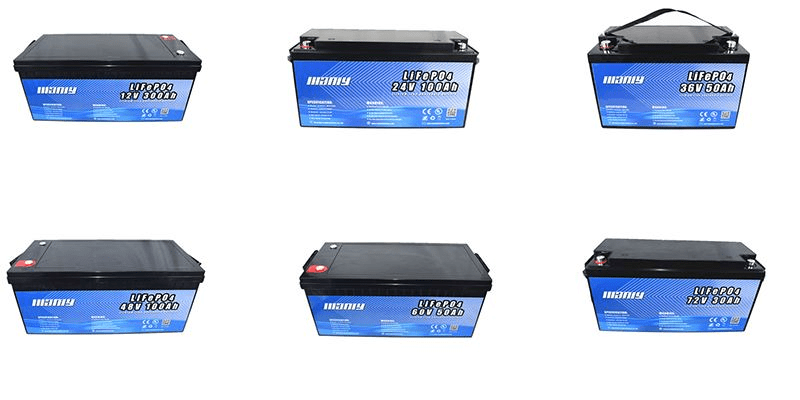
Cleaning robots have been red-hot in the domestic market in just a few years, with sales of 565,300 units in 2013, growing to 3,069,600 units in 2016 and expected to sell nearly 8 million units in 2022; sales of 10,671 million RMB.The following is an analysis of the current state of the cleaning robot market.
Cleaning robot development status
With the progress of science and technology and social development, especially affected by the accelerated pace of life and increased work pressure, people hope to be more relieved from the tedious daily household cleaning affairs. This is undoubtedly the market demand for cleaning robots to enter the home.
Cleaning robots, also known as intelligent vacuuming robots or automatic vacuum cleaners, are currently the most challenging and popular research and development topic in the field of household appliances, but with great difficulty. For example, Japan’s Hitachi has been researching and developing since the late 1980s, but no mature products have been released yet; other Japanese Panasonic, Korean Samsung, LG, Hanool Robotics, Swedish Electrolux, Dutch Philips, German Karcher, British Dyson, Australian Floorbotics, American Eureka and iRobot, Evolution Robotic, Taiwan’s United Teng Electronics, and Taiwan’s United Teng Electronics. Evolution Robotic, Taiwan LianTeng Electronics and other companies are or have been actively developing and providing some samples or small batch products. Currently, the domestic market has dozens of cleaning robot brands, but the percentage of locally established cleaning robot companies with core R&D capabilities is not high.
In recent years, cleaning robots are becoming popular at an alarming rate, and the market is developing very rapidly. In the previous development stage, cleaning robots mainly focus on improving sweeping efficiency. At this stage, cleaning robots are bound to shift to the direction of development of intelligent core technologies such as multi-sensor fusion, navigation, and path planning after ensuring that they provide better cleaning results.
Cleaning robot market status
1, China’s sweeping robot industry started late, in the early stages of development
Compared with the international developed countries, China’s service robot industry started late and is still in the early stages of development. 2010 or so foreign sweeping robot products into the Chinese market, due to the high price, most consumers find it difficult to accept, and by the influence of living habits and consumer philosophy, most of the domestic population in indoor cleaning is still mainly using manual cleaning methods or vacuum cleaner equipment, so The penetration rate of sweeping robots in China’s cleaning appliances consumer market is not high.
2, China’s sweeping robot industry development speed is fast, the development prospects are good
Although China’s sweeping robot started late, but the development speed is fast, the future development space is larger. 2010 to 2015, with the national economy continues to develop, the per capita disposable income level continues to improve, the per capita housing area continues to increase, under the influence of urbanization, intelligent and other factors, sweeping robot is gradually accepted by the majority of consumers, especially by the younger generation of consumer groups. At the same time, with the progress of science and technology, the consumption concept of Chinese consumers is also changing, and the demand for intelligent products is gradually increasing. In addition, the fast-paced life brought about by urbanization has led to a reduction in people’s domestic work time, and the population structure has gradually developed toward aging, making the rigid demand for household robots more and more obvious. According to the statistics, the sales volume of China’s sweeping robots in 2013 was 565,300 units, which grew to 3,069,600 units in 2016 and is expected to sell nearly 4 million units in 2017; the sales volume of China’s sweeping robots in 2013 was 838 million yuan, and the sales volume in 2016 was 4,250 million yuan, and the compound growth rate of sales volume from 2013 to 2016 was 71.78%, sales are expected to be 5.671 billion yuan in 2017.
3, the rapid development of China’s Internet e-commerce platform, promoting the rapid growth of online sales of sweeping robots With the rapid development of China’s Internet e-commerce platform, more and more consumers adapt to and are keen on e-commerce platform shopping, and more and more businesses also shift from traditional offline sales to online sales. Nowadays, e-commerce platform makes consumers can understand the appearance, price and product features of products through online platform without leaving home, while the regular promotion activities of Tmall, Jingdong and other e-commerce platforms have promoted the online sales of various products. According to statistics, China’s offline sales of floor cleaning robots have been relatively stable in recent years, but online sales are growing faster, with offline and online sales of 390 million yuan and 450 million yuan respectively in 2013, and offline and online sales of 520 million yuan and 3.73 billion yuan respectively in 2016, and online sales of floor cleaning robots in China are expected to exceed 5 billion yuan in 2017.
In summary, the cleaning robot market is in a period of continuous development and growth. In order to continuously improve the user experience and fit the actual function of the demand, cleaning robots will continue to evolve and improve, to achieve the true meaning of intelligent cleaning robots. In the future, cleaning robots will enter the 3.0 era, and the next technological trends will be fusion-type sensing systems, enhanced intelligence, enhanced network services, and multi-machine collaboration and self-learning, MANLY Battery is a professional lithium battery manufacturer, most our lithium battery for Intelligent cleaning robot application, if you have any reuqirement on the lithium battery for Intelligent cleaning robot, you can email MANLY Battery at [email protected]
The Johannesburg, South Africa Customer 1000 Pcs 12V 30Ah LiFePo4 Solar Street Light Battery Finished Production and Testing, Just Waiting For Packing and delivering, Then Deliver To Customer By Special Line. Thanks For Customer Trust And Support.

